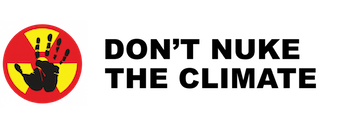Radiation
Impact of radiation exposure
This section has been taken from the publication "10 Lessons from Fukushima. Reducing risks and protecting communities from nuclear disasters" by the Fukushima Booklet Publication Committee[1]:
If a person is exposed to somewhere in the region of 7,000 mSv throughout their whole body at once, their DNA will be ripped to shreds and they will certainly die. There is no way to save them. 50 % would die from exposure to approximately 4,000 mSv. Exposure to such large quantities of radiation will bring nausea, vomiting, diarrhea, fever and in acute cases symptoms include bloody bowel discharge, hair loss, and purple spots, followed by death. Due to manifesting a short while after exposure, these symptoms are called acute disorder[2]. Exposure to 100 mSv results in a temporary decrease in lymph corpuscles and sperm; dosages below this are considered to not result in acute disorder. This dosage is called the "treshold" of acute disorder, and anything under 100 mSv is considered to be low dosage[2].
Low level radiation
Low level radiation is the radiation emitted by nuclear facilities in "normal" operation. Usually this radiation is below the allowed limits of radioactive emissions, and the atomic industry usually says it wouldn't be of any harm for this reason. However, several examinations of the last 50 years have showed that low level radiation causes significant increases of health issues like leukemia and childhood cancers (see e.g. "KiKK study").
Background information
- Cancer cases close to the nuclear repositories Morsleben and Asse in Germany German
- Less birthes around atomic facilities in Germany and Switzerland German
- "Low level radiation" and the impacts - radioactivity from Berlin research reactor to tobacco German
- IndependentWHO - background information on the impact of IAEA on WHO English/French/German/Japanese/Russian
Materials
- Time to re-evaluate the risks of radioactivity: The 2010 report of the European Committee on Radiation Risk - Lecture of Prof. Chris Busby in Helsinki on April 24, 2010
- Atomic Radiation and High-Level Nuclear Waste - video of a lecture with the Canadian scientist Gordon Edwards in Finland in January 2010
- Radioactivity from Bomb Fallout and Reactors - video of a lecture with the Canadian scientist Gordon Edwards in Finland in January 2010
Additional resources

